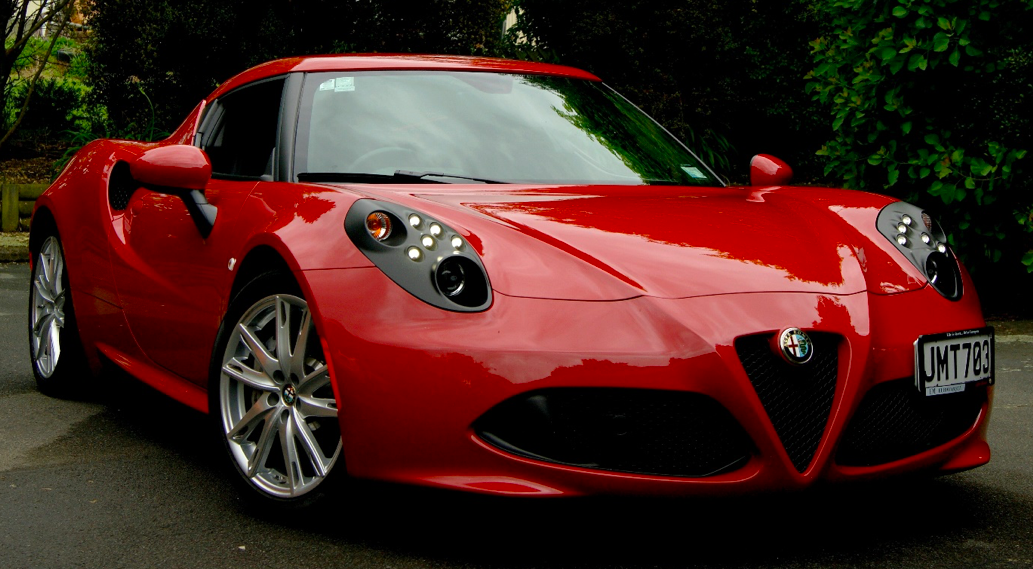Alfa Romeo 4C: Justifying The Unjustifiable
The Mazda MX-5 is the bestselling sports car of all time. Since its release in 1989, there have been over one million MX-5s sold globally.
There is no doubt the MX-5 has been a huge success for Mazda, helping it develop a more sporty image. The pretty little roadster has almost certainly been financially profitable for the company as well. But, in relative terms, for a major carmaker, a million sales over 30 years is hardly a spectacular commercial success. By way of comparison, Ford sold over one million F Series trucks in 2018.
So what is it that is keeping sports cars from selling in droves? It’s surely not that they are undesirable. On the contrary, they command the most reverence on the road. They’re like pythons: everyone thinks they’re cool, but very few actually want one.
Of course, one major barrier to sports car ownership is practicality: If you need transport for more than two, or to carry any amount of gear, a sports car simply won’t fit the bill. However, I suspect a further reason for avoiding sports cars is the stigma that they are far more hassle than they are worth. This certainly used to be the case, at least for some such vehicles.
In days gone by, low-volume British sports cars — think a TVR or Lotus — had well-deserved reputations for unreliability. If the day came when the proud owner finally plucked up courage to go for a drive, they would be embarking on a journey plagued by uncertainty as to whether their beloved vehicle would actually start. If it did start, would the journey be completed without some embarrassing mechanical hiccup resulting in the need to summon vehicle recovery for a lift home?
Sporty Italian cars also got a bad rap. I recently read a longterm report of the Alfa Romeo GTV6 from 1984 which illustrates my point. Although the author loved the noise and the drive, there were a couple of issues: the steering wheel was the same distance from the driver as the pedals — so unless you had arms the same length as your legs, the driving position required ‘‘further development’’ — and the test car was three years old, meaning it was suffering from ‘‘Alfa-itis’’ — oil and water leaks and clutch and brake troubles.
In truth, many sports cars were better as anecdotes than fully functioning machines, hence the lingering stigma. But I don’t think it is applicable to modern sports cars.
Sticking with Alfa Romeo, I wanted to find out how one of their modern offerings, the 4C coupe, is surviving after a few years of ownership. On paper, the 4C sounds like an automobile commercial disaster: Italian, gorgeous, lightweight and a joy to drive.
And so it has turned out. Since its launch in 2013, Alfa has shifted just over 4500 4Cs in Europe.
They are still available here new, priced at $119,990 for the coupe and $129,990 for the roadster. Or, if you prefer used, current options range in price from $69,990 to $99,900 for examples with less than 5000km on the clock.
The 2015 4C hardtop I was lucky enough to test belongs to a Christchurch bloke called Trev, who has owned it since new. This was the first car of its type Trev has owned, so it made him the ideal candidate to judge if the 4C was as good in quality as a ‘‘normal’’ car.
In terms of luxury, it isn’t. It’s small, noisy and the most luxurious piece of equipment fitted was a fairly ordinary stereo. But as far as niggles go, that’s all there is.
You immediately notice the 4C’s solidity upon opening one of the pillarless doors. Manoeuvring into the car takes a little practice, due to the wide sills, but it’s comfortable once you’re in. After you have done that you will not want to get out, for all you want to do in the 4C is drive and drive. Taking the 4C on a weekend away is therefore an appealing prospect but just bear in mind that 110 litres of luggage space isn’t overly capacious so either pack light or head to a nudist camp.
Trev’s Alfa has been mechanically sound after nearly 16,000km and on the road it feels solid with no rattles or unusual engine noises. Just the sound of the rorty turbo-charged four-cylinder engine behind you. And that engine is only 1750cc, which is all the 4C needs because it weighs less than 900kg, meaning you get supercar-like performance (0-100kmh in 4.5 seconds) and handling but without the massive fuel bill.
Still not sold? The 4C has a carbon fibre tub, that’s proper performance car technology. The tub is very stiff, very light and very strong, to the absolute benefit of cornering. The gearbox is a double clutch flappy paddle affair but is automatic-smooth around town.
Trev absolutely loves it. I love it. And although the 4C was a little overshadowed when we stumbled across a McLaren Senna while out on test, it still lost none of its appeal; in fact the Senna put into perspective what good value the 4C really is.
As I suggested earlier, modern sports cars don’t deserve the reputation of their ancestors. They no longer catch fire at an intersection — like my uncle’s Alfa did back in the 1990s. They are still impractical compared with the family car, which is hardly a surprise. But they are no longer a risky purchase and are simply something to be enjoyed, even if they are Italian made and produced in exceedingly small numbers.


